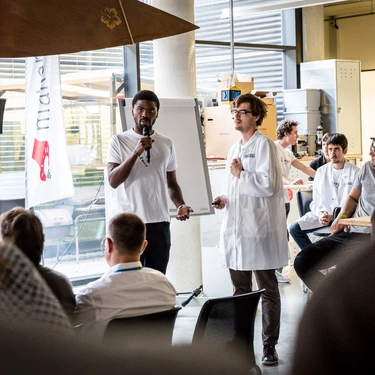It is very common – and advisable – to conduct a smaller scale pilot project (also called a Proof of Concept or POC) before starting off a long-term collaboration with an established corporation.
- This gives you the opportunity to get to know the corporation better and figure out whether and how you would like to work together.
- Further, it gives you the chance to really convince the other side that your solution will be beneficial and worthy of further negotiations.
- It can also be very good to be able to test your solution on a smaller scale in order to get ready to customise or scale it.
- It gives you the opportunity to embed your solution in an existing infrastructure, where it can become an essential part.
- In addition, you can get to know the customer interfaces by using those of your collaboration partner.
- Finally, pilot projects usually cost less than a full-blown cooperation, which means that budgets can often be approved by business unit managers and contracts don’t necessarily have to go through the official purchasing process.
Video Introduction
Setting up a plan for a pilot project
Pilot projects should always start with the definition of a common plan for the pilot and for what will happen afterwards. In doing so, you can avoid getting caught in the so-called “pilot purgatory”, where you are conducting pilot after pilot without ever entering into proper collaboration. The specifics of the projects should be elaborated by both partners together, but you should have thought about it before you enter the negotiation table with the corporate.
For this reason, the following section provides an overview of the most important aspects to consider before negotiating and entering into a pilot project.
Pilot project conditions
Clear preconditions
- A common vision and mission statement
- Agreed expectations and needs
- Scope and content of the project
- Project plan defined before starting to negotiate
- Agreement to exchange needed resources with reasonable deadlines
- Non-disclosure agreement (NDA) for securing confidential information
- Put a reasonable price on your POC
Agreed working mode
- A clear and reasonable timeline with deadlines
- Milestones to track critical steps
- Clear KPIs, based on which the success of the project can be measured objectively
- Clear deliverables for each side – think about what you need from the corporate to make the project a success
- Modalities and formalities of communication
- Frequency of interaction
Responsibilities
Communication
- Define contact people with the power to make decisions
Interaction
- Keep up a clear, honest and viable interaction during the project, even if unforeseen changes appear
Best Practice Example: Proof of Concept (POC)
Reviewing the collaboration
After the pilot project, it is important to measure the success of the cooperation to determine if follow-up projects are desirable. To validate this, we would like to encourage you to think about the following questions:
- Did you reach the defined goals?
- How would you rate the workload in relation to the achievements?
- How would you rate the atmosphere between you and your project partner?
- Has your start-up been able to develop further during the collaboration?
- Could you imagine cooperating again in this constellation?
- Can you think of any things you would like to improve for the next collaboration?
These are just some hints for reviewing your pilot projects. To get an accurate image, we recommend you make sure to also gather feedback from everyone involved in the pilot project, including your corporate partner!
Keep on collaborating
Once you conclude your first collaboration project and you are happy with the collaboration review, it is not time to relax. You have to keep the motivation at a high level, implement learning effects and start the circle again to implement it strategically.
Therefore, keep the following three points in mind.
- Set up an experienced collaboration team to fill the pipeline with new collaborations. Make sure that the team understands the world of corporates.
- Create a publicly visible, single access point for corporates. In case an established company wants to collaborate with your start-up – ideally because of your reputation through recent collaborations – you have to be prepared.
- Make it easier for corporates to work with you. This includes, among other things, learning from your last collaboration and building up a better understanding in terms of the structures, responsibilities and processes of an established company.
Nevertheless, be aware that every collaboration is unique; you will face different challenges every time you work together with another company.
Best Practice Example: successful project with a global Player
Templates
Please feel free to download the following templates and use them to keep on track during the complex phase of preparation.
Avoid getting stuck
If you think the collaboration is not moving forward as you expected, because the commitment of the corporate is not sufficient, put the relationship on hold. Define the conditions that need to be fulfilled for you to continue working on the collaboration and communicate them clearly to the corporate. If they cannot agree to fulfil these conditions, it might be better to end the collaboration to avoid getting stuck.
Learn more
With this section we have given you everything it takes to set up a viable collaboration with an established company from Europe! If you want to change the point of view and find out what a corporate needs to consider when embarking on a collaboration…
Are you interested in the corporate perspective?

